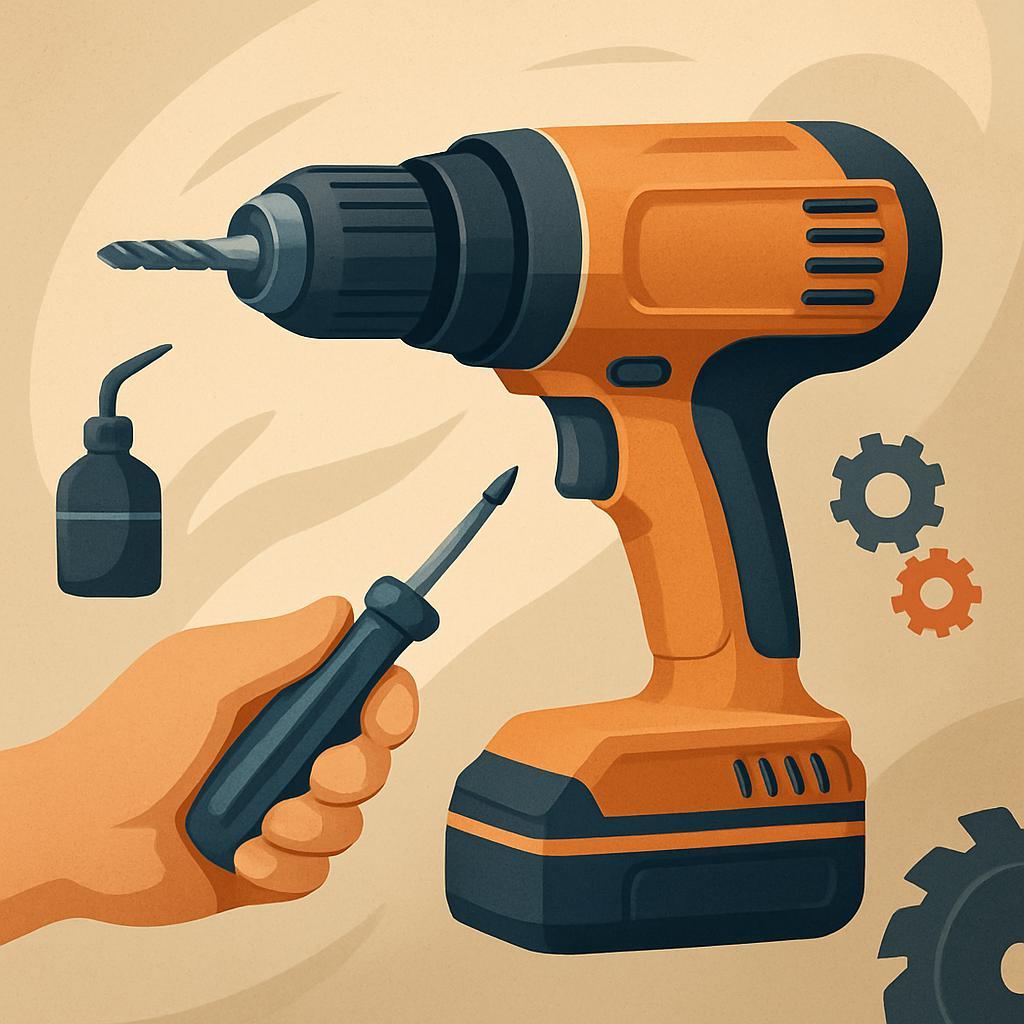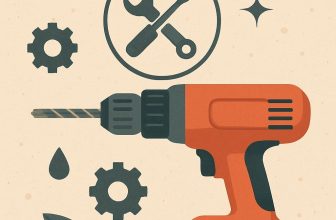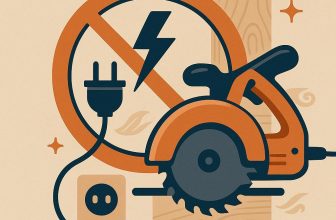
What if the difference between a flawless cut and a frustrating setback was simply keeping your tools in tune? A well-maintained power tool doesn't just perform better-it stays safer, costs less too fix, and powers your next project with confidence. For woodworkers chasing clean joints and steady progress, maintainance is a quiet craft in itself: a routine that protects blades, bearings, and batteries, reduces downtime, and preserves resale value. In this article, you'll learn a practical, step-by-step plan-daily checks, seasonal service, storage habits, and simple tune-ups-that keeps torque steady, cuts true, and tools ready to build your next masterpiece.
power tool cleaning and inspection routines to extend life
Regular cleaning after each session helps prevent dust buildup that can clog vents, gears, and seals. Start by unplugging the tool and removing the battery on cordless models. Wipe the exterior with a dry microfiber cloth, then use a soft brush or compressed air in short bursts to dislodge dust from vents, chucks, and switch openings. Avoid water or solvents on the housing, and never spray liquids directly into openings. For sticky residues, dampen a cloth with isopropyl alcohol and wipe gently, then dry. Keep blades, bits, and attachments clean and free of debris before storage.
| Area | Action | Frequency |
|---|---|---|
| Vent and exterior | Dust with brush or compressed air | After every use |
| Power cord/battery contacts | inspect and clean; replace if corrosion | Monthly |
| Internals (chuck, gears) | Check for wear; lubricate if specified | Every 6-12 months |
Inspection routines should be quick but thorough. Check the power cord for cracks or nicks and inspect the plug and strain relief-any signs of wear mean energy loss or shock risk. For cordless tools, inspect battery contacts for corrosion and ensure the battery seats firmly. Open and close chucks smoothly; test the trigger and variable-speed control for a crisp response. Listen for grinding, scraping, or unusual vibration; if you notice gear play, wobble, or the tool runs hot under light load, schedule service or replace worn parts like brushes or belts as recommended by the manufacturer.
Establish a practical maintenance rhythm that fits your workflow. A quick weekly check (visual inspection, wipe-down, and vent clearing) plus a deeper monthly clean (dust removal inside housings, rails, and ports) can dramatically extend life. Keep a simple log of parts replaced, lubrication dates, and performance notes. Store tools in a dry, dust-free case or cabinet, away from extreme heat or moisture, and keep batteries at the recommended storage charge level separate from the tool if you won't use them for a while. Use only manufacturer-approved lubricants and apply sparingly to gears or pivots; over-lubrication attracts dust and can cause buildup.
build your Dream Workshop on a Budget →
Battery care and charging habits for longer tool life
Your power tool batteries are the engine behind consistent performance. Store and handle packs with care: keep them in a cool, dry place away from direct sun and heat, and wipe the contacts clean with a dry cloth to prevent corrosion. If you won't be using a tool for a while, aim for a mid-range charge and avoid extreme temperatures-this helps preserve capacity and prolong life.
- Use the manufacturer's charger or a certified replacement to ensure correct voltage and charging curves.
- Avoid letting the pack fully discharge before recharging; shallow cycles are gentler on most chemistries.
- Store long-term at about 40-60% charge to minimize stress on the cells.
- Charge in a well-ventilated area and within the recommended temperature range (usually 0-40°C).
- Check for swelling or signs of damage and replace the battery if you notice any.
Charging habits should align with the battery chemistry. Use a smart charger that employs CC/CV charging and automatically terminates when full. Don't leave a fully charged battery on a basic charger for extended periods; unplug once it reaches 100%. If a tool will sit idle for weeks, top it up to roughly 50-60% and check the charge every few weeks to protect capacity.For reliable gauge readings, perform occasional calibration (full charge followed by a controlled discharge) as described in the manual.
A quick reference by battery type can guide care decisions:
| Battery type | Care tip |
|---|---|
| Li-ion | Keep around 20-80%; use a smart charger; avoid deep discharges. |
| NiMH | Partial discharge is acceptable; store around 40-60%; avoid prolonged heat. |
| LiFePO4 | Stable chemistry; monitor temperature; use correct charger; avoid over-voltage. |
weave battery care into your daily workflow: use original batteries and chargers, rotate tools to spread wear, and keep a simple log of cycle counts and replacement dates. Clean any corrosion on contacts with a dry brush,and store tools in a dry space with good airflow. By treating packs with respect and planning charging around your work schedule, you'll sustain peak performance and reduce the risk of premature failure.
Build Your Dream Workshop on a Budget →
Lubrication and wear parts maintenance for smooth operation
Lubrication basics for smooth operation Regular, targeted lubrication reduces friction, prevents heat buildup, and extends bearing life. Use the lubricant type your tool manufacturer specifies: light mineral oil for pivots and exposed metal surfaces, or a high-quality grease for sealed bearings. Apply only a small amount to moving surfaces and wipe away excess to avoid attracting dust. After applying lubricant,run the tool briefly to distribute it evenly and check for any leaks.
Know your wear parts Bearings, gears, seals, and brushes wear with use. Inspect these parts during maintenance: listen for grinding, check for unusual looseness, and feel for heat after use. If you notice play, noise, or overheating, replace promptly with OEM parts to maintain tolerances.Keep a small stock of common wear parts and label them by model to speed service. Clean the area before re-lubricating to prevent grinding dust from entering moving joints.
Quick reference guide to help you schedule lubrication and checks at a glance.
| Component | Lubricant | Interval | Notes |
|---|---|---|---|
| Bearings / spindle seals | Light machine oil (or factory grease) | 8-12 hours of use | Wipe and reapply as needed; avoid dust buildup |
| gears in gear train | Grease (NLGI 1-2) | 20-40 hours | Apply sparingly; ensure even coat |
| Pivot points & linkage | Light oil or spray lubricant | After cleaning or monthly | Keep away from electrical contacts |
Smart habits for longevity Clean and dry tools after use, wipe off dust and resin, and store in a dry space away from moisture.Maintain a simple maintenance log with dates, parts replaced, and lubricant types used. For dusty sites, use protective covers and seals; avoid exposing tools to rain or solvents. Always unplug before servicing and reassemble carefully to avoid misalignment. Consistency beats intensity-short, regular sessions outpace sporadic deep cleans.
Build Your Dream Workshop on a Budget →
blade and bit care for durable cutting performance
Preserving blade and bit health starts at the bench. After finishing a cut, wipe away dust and pitch, then dry thoroughly. A light coating of mineral oil or a dedicated blade lubricant helps prevent rust and reduces friction on the next pass. Store blades and bits in a dry, organized case to protect teeth from nicks and to keep them ready for precise results.
Regular sharpening and timely replacement keep cutting performance durable. Dull teeth pull or burn material and increase heat, which wears the blade faster. Inspect edges for chips, warping, or missing teeth, and ensure the blade runs true in the arbor. For carbide blades, avoid self-sharpening; professional resharpening or replacement is usually best. For drill bits, sharpen HSS with the correct angles; carbide-tipped bits require proper equipment or replacement when damaged.
Use a concise maintenance checklist to stay on track: the following quick guide helps you act before each project rather than after a problem develops.
| Component | Care Tip | Frequency |
|---|---|---|
| cutting blade (circular/reciprocating) | Wipe clean,remove pitch; apply a light oil to prevent rust; inspect for chips or bending. | Inspect before use; sharpen/replace as needed |
| Drill bit (HSS or carbide) | Clean shanks; remove debris; lightly oil; avoid grinding carbide bits at home unless trained | After heavy use; sharpen or replace when dull or damaged |
Finish with smart storage and safe handling. Always use guards and clamps, avoid forcing a cut, and let the tool do the work to minimize heat buildup. After use, wipe clean, reapply a touch of oil, and return blades to their protective cases. Thoughtful storage and careful handling translate into longer tool life and consistently clean cuts.
build Your Dream Workshop on a Budget →
Safe storage and handling to prevent corrosion and damage
safe storage starts with keeping tools dry and clean. After every use, wipe away dust, metal shavings, and moisture. For exposed metal surfaces, apply a thin layer of mineral oil or tool wax to shield against air and humidity. If your workshop is prone to dampness, place silica gel packs in tool boxes and consider a small dehumidifier for the cabinet.Avoid resting tools directly on concrete floors; instead,raise them on shelves,pallets,or inside labeled drawers to improve air circulation and reduce moisture contact.
Organize storage with purpose to minimize accidental damage and corrosion. Keep blades, bits, and attachments in their protective cases; store cordless batteries in dedicated trays; and label each spot so you can spot moisture-prone areas at a glance. Follow these quick actions:
- Wipe and dry each tool before returning it to storage.
- Lubricate moving parts sparingly after cleaning.
- Store blades and bits with protective guards in dedicated compartments.
- Keep tools off damp floors and away from chemical spills.
- place active moisture control like silica gel or a small dehumidifier in the storage area.
Pay attention to power sources and long-term care.Detach batteries from tools when not in use and store them in a cool, dry place away from direct heat; charge batteries only as recommended to avoid swelling.Disconnect cords and store tools in their cases or on wall mounts to reduce stress on connectors. Regularly inspect for any signs of corrosion around battery contacts, plug-ins, or blade edges, and clean with a dry cloth or isopropyl alcohol if needed, ensuring components are completely dry before reassembly.
| Area of concern | Recommended action | Why it helps |
|---|---|---|
| metal tools | Apply a light coat of oil or wax; store in a dry container | Forms a moisture barrier to slow rust |
| Batteries & chargers | store in a cool, dry place; detach from tools | Preserves battery life and prevents leakage |
| Blades & bits | Keep in protective cases or with blade guards | Protects edges and reduces nicks |
| Cords & electronics | Coil loosely; avoid sharp bends; keep dry | Prevents insulation damage and shorting |
| Environment | Use dehumidifier or silica gel; elevate tools | Minimizes moisture-induced corrosion |
Build Your Dream Workshop on a Budget →
Regular checks and calibration for reliable power tool performance
Regular checks begin with a simple, thorough visual audit before and after any project. Look for loose screws, cracked housings, damaged power cords, and worn brushes or bearings. Inspect blades,bits,or abrasives for nicks and uneven wear,and test that guards and safety interlocks move freely. Wipe away dust, lubricate only where the manual allows, and run the tool at no-load speed to spot unusual vibrations or heat.If anything feels off, stop and address it before continuing.
Calibration and alignment matter for accuracy and safety. for tools with depth stops, fences, or optical guides, verify them against a reliable reference (a square or a straight edge) and adjust per the manufacturer's instructions. Check runout on rotating components with a dial indicator or a simple test block, and retighten or replace worn parts as needed. After any impact, recheck critical settings and re-test on a scrap piece to confirm results.
turn calibration into a routine by keeping a maintenance log and planning periodic checks. After rough handling or transport, re-check key settings and run a quick test before resuming work. Stock a small spare parts kit and replace worn items before they fail. Establish a cadence that fits your tools and workload-daily quick checks, weekly deeper checks, and monthly calibration reviews.
- Daily: visual inspection, unplug before adjustments
- Weekly: test run, check guards, tighten fasteners
- Monthly: calibration checks, measure runout, replace worn parts
- Quarterly: full service, inspect electrical insulation, battery health
| Tool Type | Check / Calibration | Recommended Frequency | How to Verify |
|---|---|---|---|
| drills / Impact Drivers | Chuck runout, torque clutch, grip | Monthly | Test with reference bit and a straight hole |
| Saws (circular / miter) | Blade alignment, fence accuracy | Monthly | Make a test cut against a square and straight edge |
| Rotary Tools / Routers | Collet runout, depth stop | Quarterly | Zero depth with a reference block; verify cut depth |
| Abrasive Sanders | Tracking, belt/wheel tension | Quarterly | Check tracking on a scrap piece; adjust as needed |
Build Your Dream Workshop on a budget →
Q&A
How often should I clean and oil my power tools?
Clean after each use to remove dust and debris,especially on dust-prone tools like saws and planers. Wipe with a dry or slightly damp cloth, and blow vents with compressed air if needed. Lubricate moving metal parts only as the manual recommends-typically every few months or after heavy use-and avoid oiling electric motors or sealed components.
What is the best way to store power tools to prevent damage?
Store tools in a dry, clean area away from moisture and extreme temperatures.Use the original cases or wall racks to protect delicate parts, and remove batteries when not in use. Keep cords untangled and check that battery contacts are clean before the next use.
How can I extend battery life and performance on cordless tools?
Charge batteries within the recommended temperature range and avoid letting cells fully discharge if your pack isn't designed for it. keep them at a mid-level charge during storage and use the charger specified by the manufacturer. Periodically following the manual's guidance on maintenance can definitely help maintain accuracy and performance.
How do I detect and prevent common issues like overheating or unusual noises?
Notice when a tool becomes unusually hot, smells odd, or makes grinding or squealing sounds-these are signs to stop using it. Unplug the tool, inspect vents, brushes, and blades for wear, and clean any dust buildup. If problems persist, service or replace worn parts rather than pushing the tool beyond its limits.
The Way Forward
Taking care of your power tools is a quiet investment that pays dividends in every cut, every assembly, and every project that runs smoothly. The core takeaway is simple: a brief routine-clean, inspect, lubricate moving parts, check cords, replace worn bits, and store tools properly-keeps performance high and surprises low. For woodworkers, reliable tools mean better accuracy, safer operation, and less frustration when inspiration strikes. Make it practical: schedule a 10-minute maintenance at the end of the session,try a small project to test your routine,or explore more guides to deepen your know-how. With care, your workshop endures. Keep your tools sharp, your skills growing, and your workshop alive with possibility.







Great tips! Keeping tools clean and well-lubricated really does make a difference; I’ve noticed my equipment lasts much longer since I started following a regular maintenance routine.
I couldn’t agree more, Gloria! Regular maintenance not only extends the life of tools but also ensures they perform safely and efficiently. It’s worth the effort!
Absolutely, Kyle! Investing a little time in maintenance not only saves money in the long run but also enhances your productivity by keeping everything in top shape.
Consistency is key! I’ve found that setting a specific day each month to inspect and clean my tools has made a huge difference in their longevity and performance.
Proper storage is just as important as maintenance! I always make sure to keep my tools in a dry, organized space to prevent rust and damage. It makes a huge difference!
I totally agree with everyone! Having a checklist for maintenance tasks has worked wonders for me; it not only keeps me organized but also ensures I don’t forget any important steps, leading to much better tool performance and durability.
I totally agree with everyone! Having a checklist for maintenance tasks has worked wonders for me; it not only keeps me organized but also ensures I don’t forget any important steps, leading to much better tool performance and durability.
Great insights, everyone! I’ve also noticed that using the right lubricant for each tool not only prevents wear and tear but significantly boosts their efficiency-definitely worth incorporating into your maintenance routine!
I completely agree with everyone! Regularly checking the battery health on cordless tools has also been a game-changer for me; it ensures they’re always ready to go and helps extend their overall lifespan too!
Absolutely, Sara! I’ve found that using tool cases or racks not only protects them from the elements but also helps me quickly locate what I need, making my workflow so much smoother!
That’s so true, Christine! I’ve started setting reminders for regular maintenance checks, and it has made a noticeable difference-it keeps me accountable and ensures my tools are always in top shape and ready for any project!
Excellent points! I always make it a habit to clean my tools after each use, as this simple step prevents rust and build-up, ultimately extending their lifespan and saving me money in the long run.
Great tips all around! I’ve started keeping a maintenance log for my power tools, and it’s really helped me stay on track with their care and spot any issues before they become bigger problems.
These insights are invaluable! I’ve learned that using high-quality lubricants on moving parts can greatly enhance performance and longevity. Regularly tuning up my machines has made a significant difference as well!